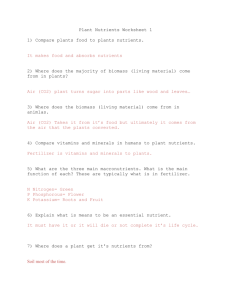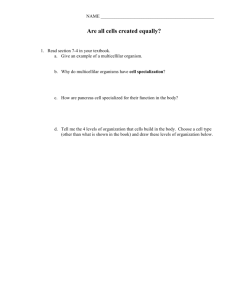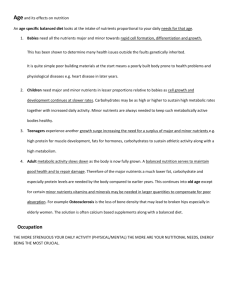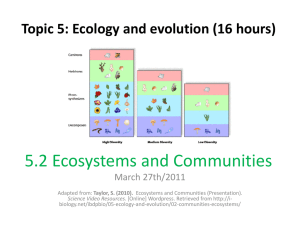4.1 Species, Communities, Populations
advertisement
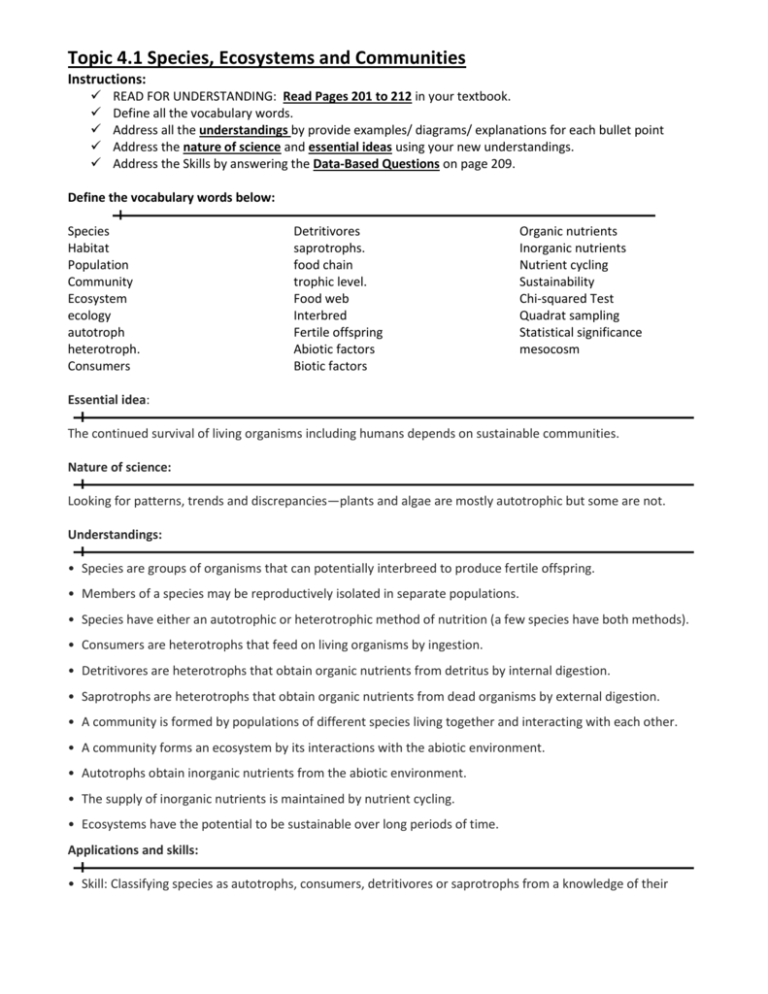
Topic 4.1 Species, Ecosystems and Communities Instructions: READ FOR UNDERSTANDING: Read Pages 201 to 212 in your textbook. Define all the vocabulary words. Address all the understandings by provide examples/ diagrams/ explanations for each bullet point Address the nature of science and essential ideas using your new understandings. Address the Skills by answering the Data-Based Questions on page 209. Define the vocabulary words below: Species Habitat Population Community Ecosystem ecology autotroph heterotroph. Consumers Detritivores saprotrophs. food chain trophic level. Food web Interbred Fertile offspring Abiotic factors Biotic factors Organic nutrients Inorganic nutrients Nutrient cycling Sustainability Chi-squared Test Quadrat sampling Statistical significance mesocosm Essential idea: The continued survival of living organisms including humans depends on sustainable communities. Nature of science: Looking for patterns, trends and discrepancies—plants and algae are mostly autotrophic but some are not. Understandings: • Species are groups of organisms that can potentially interbreed to produce fertile offspring. • Members of a species may be reproductively isolated in separate populations. • Species have either an autotrophic or heterotrophic method of nutrition (a few species have both methods). • Consumers are heterotrophs that feed on living organisms by ingestion. • Detritivores are heterotrophs that obtain organic nutrients from detritus by internal digestion. • Saprotrophs are heterotrophs that obtain organic nutrients from dead organisms by external digestion. • A community is formed by populations of different species living together and interacting with each other. • A community forms an ecosystem by its interactions with the abiotic environment. • Autotrophs obtain inorganic nutrients from the abiotic environment. • The supply of inorganic nutrients is maintained by nutrient cycling. • Ecosystems have the potential to be sustainable over long periods of time. Applications and skills: • Skill: Classifying species as autotrophs, consumers, detritivores or saprotrophs from a knowledge of their mode of nutrition. • Skill: Setting up sealed mesocosms to try to establish sustainability. (Practical 5) • Skill: Testing for association between two species using the chi-squared test with data obtained by quadrat sampling. • Skill: Recognizing and interpreting statistical significance.


